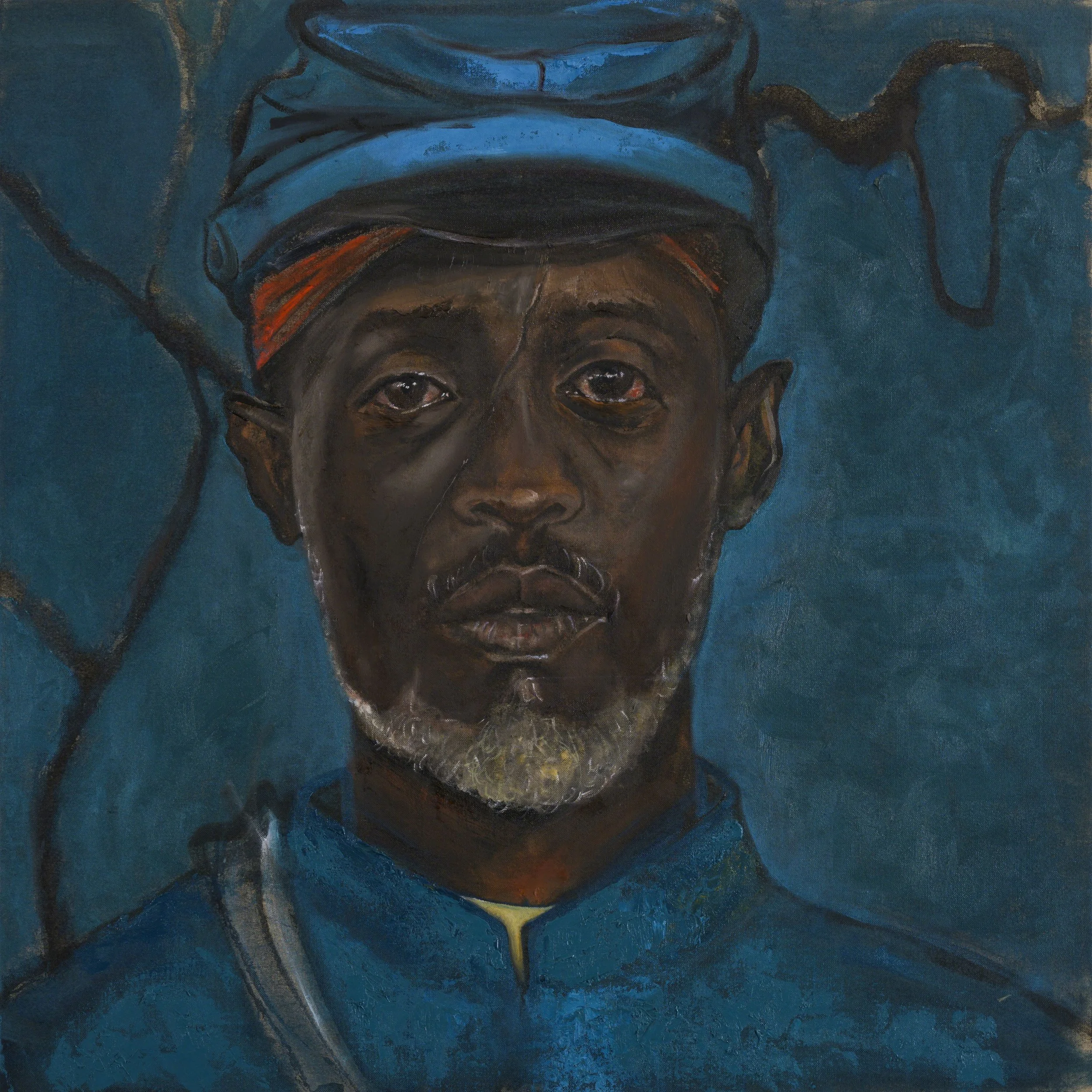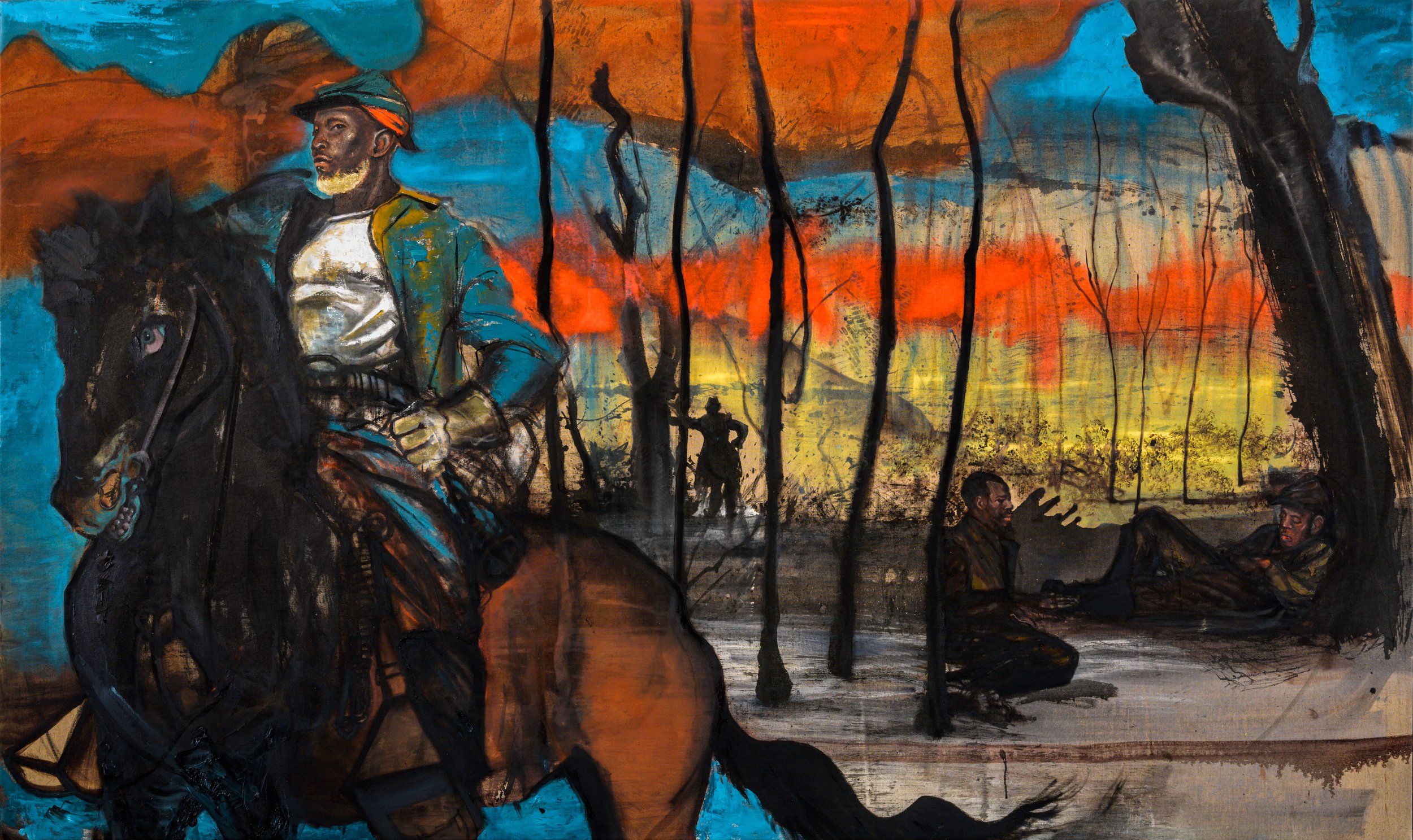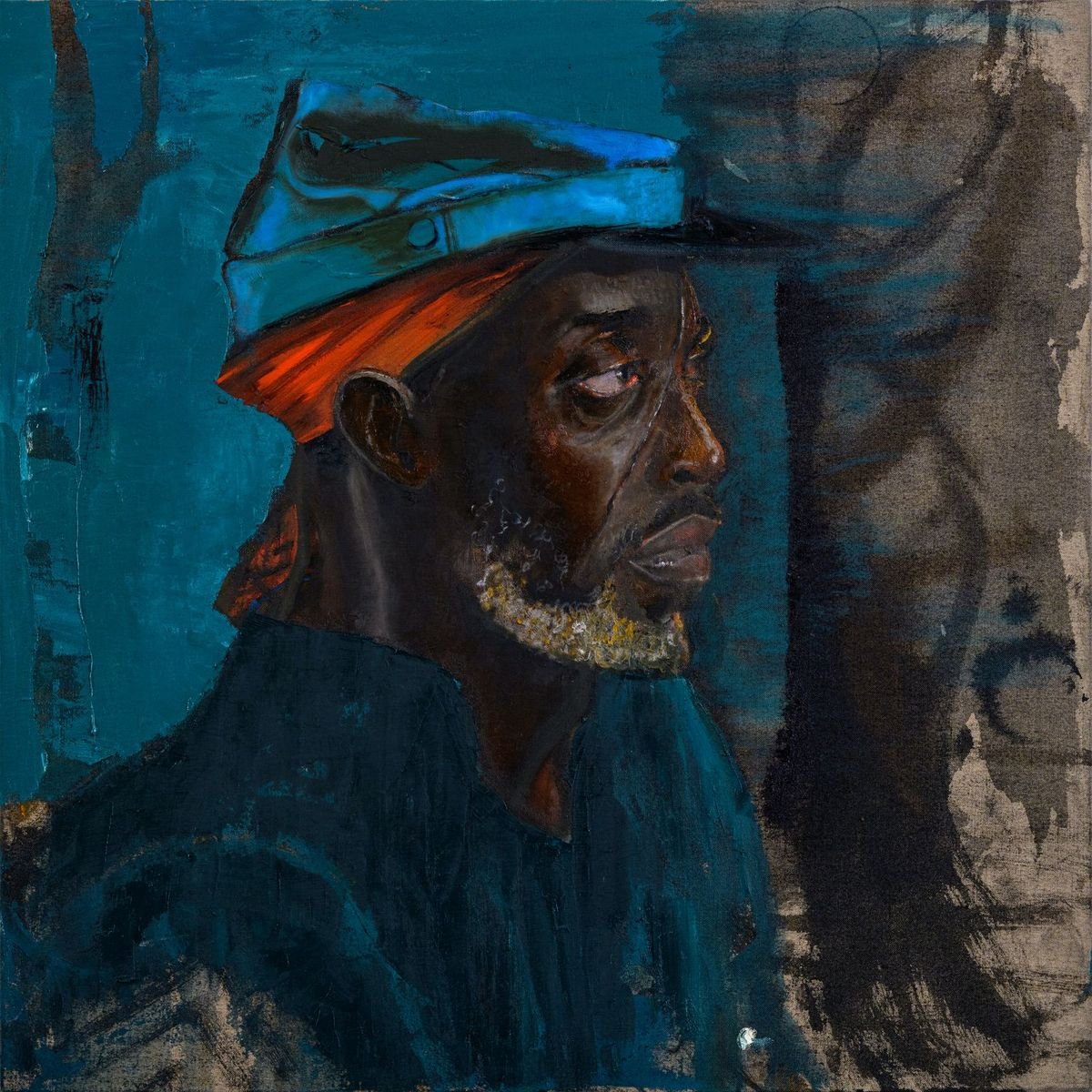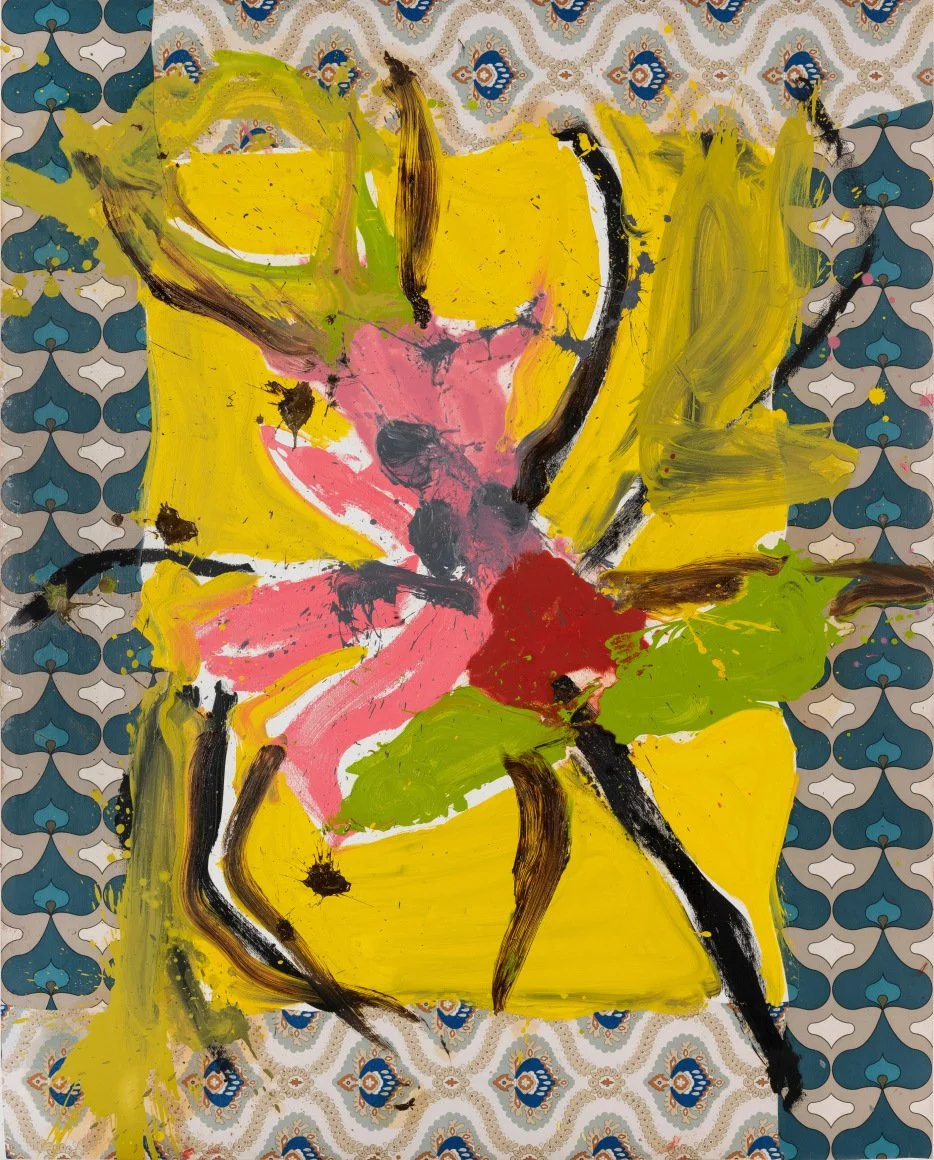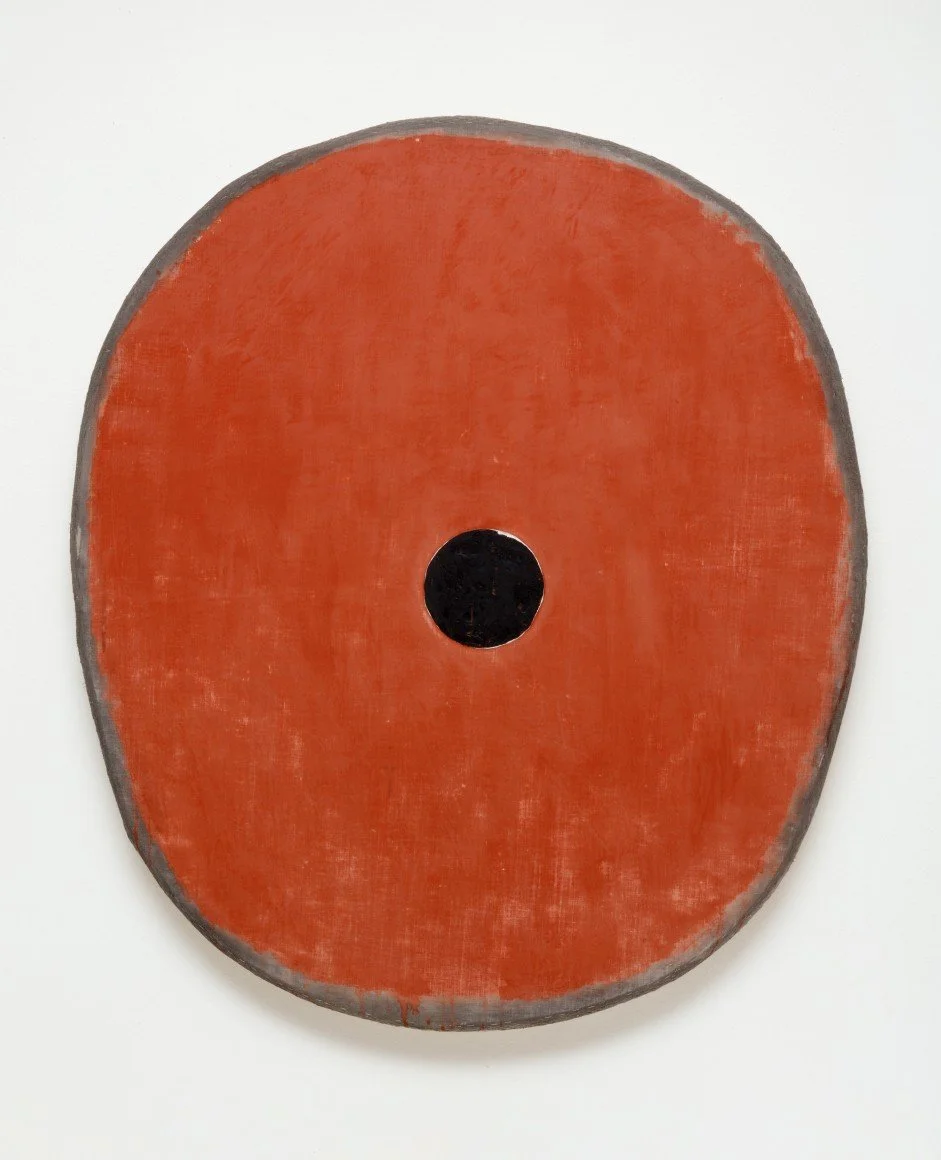Chaz Guest
“Memories of Warriors”
New York, 43 Clarkson Street
The presentation will feature approximately eight new monumental portraits and tableaux that together suggest a bold, distinctive form of contemporary history painting. In the works on view, Los Angeles-based artist Guest reclaims longstanding cultural narratives through powerful new tales of his own creation.
Chaz Guest is admired as a commanding storyteller whose visual language is equally physical and nuanced, muscular yet emotionally complex. Motivated by a desire to express the vulnerable, sensitive nature of our shared humanity, his art explores and recasts existing cultural narratives, acknowledging the tragic truths of America’s history of racism and enslavement in a way that spotlights contemporary exigencies and open paths toward healing. Reframing buried tales and long misrepresented facts, Guest uses stories of his own making to capture the spirits of his subjects. He deploys bravura mythmaking to unite people in a new common experience and ignite shared responses.
Chaz Guest The Planning, 2021 Oil and Japanese Sumi ink on linen 72 x 120 inches (182.9 x 304.8 cm) © Chaz Guest; Photo by Toshi Sakurai; Courtesy the artist and Vito Schnabel Gallery
Guest’s paintings on view at Vito Schnabel Gallery depict scenes of perilous military action – portraits and battle tableaux that reclaim the story of the Buffalo Soldiers, the U.S. Army’s first all-African American peacetime regiments instated in 1866 following the end of the Civil War. This body of work evolved from Guest’s celebrated Cotton series, and draws as well from Buffalo Warrior, the artist’s 2017 graphic novel about a young boy who was born into slavery, fought as a Buffalo Soldier in adulthood, and was resurrected as a superhero after his death. In this series, Guest channels the influence of Akira Kurosawa’s epic 1954 film Seven Samurai, spotlighting the fierce humanity of the Buffalo Soldiers who forged forward, carrying with them the vestiges of their collective and individual pasts, in service and sacrifice despite hardship and discrimination. Guest has said, “We all need superheroes. I’d love for a generation of ‘other than white’ to be strong in their imaginations. So, I created Buffalo Warrior: the first superhero from the cotton fields of America who fought as a Buffalo Soldier.”
Chaz Guest The Lonely Night, 2021 Oil and Japanese Sumi ink on linen 40 x 40 inches (101.6 x 101.6 cm) © Chaz Guest; Photo by Toshi Sakurai; Courtesy the artist and Vito Schnabel Gallery
Guest builds his compositions through quick, intuitive brushstrokes, beginning each painting in the style of a Japanese Sumi ink drawing. As his immediate, free flowing, calligraphic lines manifest on the canvas, “they release an energy,” that, Guest explains, exerts itself in the further development of the painting. While these initial gestures may not be visible in the final composition, their influence is deeply felt in the roiling strokes of pigment that coalesce into figure and action. Invited to paint on stage in Japan in 1997 during a performance by saxophonist Kenny Garrett, Guest attributes the dance-like motions of his brush to this experience, when he created his first ‘live painting’ to the sounds and spirit of music. In the same way jazz greats layer sound through improvisation, Guest creates the characteristic layered effects of his art through a masterful handling of pigments. His battle scenes are bathed in vermillion and prussian blue with hints of yellow ochre and cinder grey. Employing washes in such hues as burnt sienna, titanium white, red umber, and sap green to create the rich-hued skin tones of his subjects, Guest mixes colors in unexpected ways, allowing combinations of oils to dry, before adding more paint to the depth and texture of his layers. He notes Giorgio de Chirico and Balthus as influences.
Chaz Guest The Charge, 2021 Oil and Japanese Sumi ink on linen 72 x 120 inches (182.9 x 304.8 cm) © Chaz Guest; Photo by Toshi Sakurai; Courtesy the artist and Vito Schnabel Gallery
The two haunting portraits on view at Vito Schnabel Gallery, Michael K. Soldier (2021) and The Lonely Night (2021), invite viewers to look through his subject’s eyes. The sitter for these works was the celebrated late actor Michael K. Williams (1966–2021), and Guest’s works pulsate with the deep connection the two men shared while absorbed in conversation during Williams’ sitting. Tapping into the stamina and vitality, as well as the pathos and struggle, of Williams’ inner world, Guest has materialized his human struggle in the visual narrative of the Buffalo Soldiers. While the two heroic portraits on view speak to a specific tale of heroes determined to transform their world, Guest suggests that history is the sum of individual stories in the present day, at once personal and universal.

